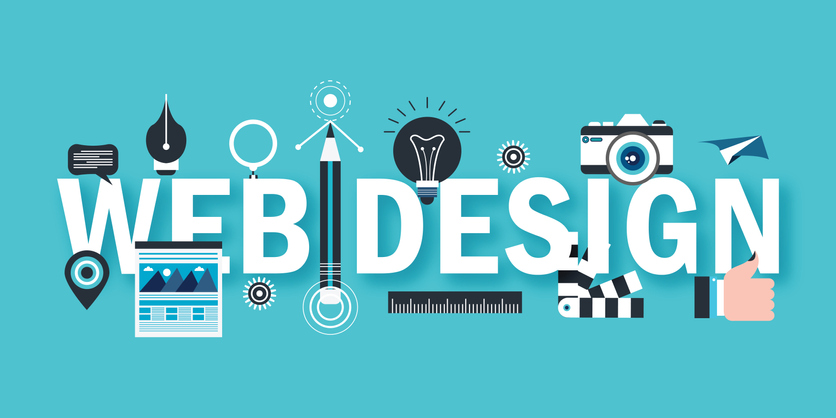Proven Strategies for Enhancing Your Site through Superior Web Design
Wiki Article
A Comprehensive Review of the very best Practices in Web Layout for Creating Navigable and intuitive Online Systems
The effectiveness of an online platform hinges dramatically on its layout, which must not just bring in individuals but likewise assist them seamlessly through their experience. Finest methods in website design incorporate a variety of techniques, from receptive designs to available navigation structures, all targeted at cultivating intuitive interactions. Comprehending these concepts is crucial for designers and programmers alike, as they directly effect customer fulfillment and retention. The details of each method often expose deeper ramifications that can change a basic interface right into an outstanding one. What are the crucial elements that can elevate your system to this level?Comprehending Individual Experience
Understanding user experience (UX) is crucial in web style, as it directly influences how visitors communicate with a website. A well-designed UX ensures that users can navigate a website intuitively, gain access to the information they seek, and total wanted actions, such as signing or making a purchase up for a newsletter.Crucial element of effective UX design consist of usability, accessibility, and aesthetics. Functionality concentrates on the ease with which individuals can achieve tasks on the internet site. This can be accomplished through clear navigation frameworks, sensible content organization, and responsive responses devices. Ease of access ensures that all customers, including those with specials needs, can communicate with the site efficiently. This includes sticking to developed guidelines, such as the Internet Material Access Guidelines (WCAG)
Appearances play a vital role in UX, as visually appealing styles can boost user contentment and interaction. Shade schemes, typography, and imagery must be thoughtfully chosen to develop a cohesive brand identity while likewise facilitating readability and comprehension.
Inevitably, prioritizing individual experience in internet style fosters better user fulfillment, encourages repeat check outs, and can significantly boost conversion prices, making it an essential aspect of successful electronic strategies.
Value of Responsive Layout
Receptive layout is a vital element of contemporary internet growth, ensuring that web sites provide an ideal viewing experience across a large range of tools, from desktop computers to smartphones. As individual actions increasingly moves in the direction of mobile surfing, the requirement for web sites to adapt effortlessly to different screen sizes has actually ended up being paramount - web design. This flexibility not just improves usability but also significantly influences customer interaction and retentionA responsive design uses liquid grids, flexible images, and media questions, enabling a cohesive experience that maintains capability and visual integrity despite tool. This technique eliminates the demand for customers to zoom in or scroll horizontally, bring about an extra user-friendly interaction with the content.
Furthermore, search engines, notably Google, focus on mobile-friendly sites in their positions, making receptive style vital for maintaining presence and availability. By embracing responsive layout principles, services can reach a more comprehensive audience and boost conversion rates, as individuals are most likely to engage with a website that provides a constant and smooth experience. Ultimately, receptive design is not simply a visual option; it is a strategic requirement that mirrors a commitment to user-centered style in today's electronic landscape.
Simplifying Navigation Frameworks

Utilizing an ordered structure can significantly boost navigation; key classifications ought to be easily available, while subcategories need to logically adhere to. Factor to consider of a "three-click regulation," where customers can get to any web page within 3 clicks, is helpful in keeping navigation user-friendly.
Incorporating a search feature additionally enhances use, enabling users to find material straight. web design. Furthermore, implementing breadcrumb click here to find out more routes can supply individuals with context regarding their place within the website, promoting simplicity of navigating
Mobile optimization is an additional essential facet; navigation needs to be touch-friendly, with clearly defined links and switches to accommodate smaller sized screens. By minimizing the number of clicks needed to access material and guaranteeing that navigating is regular across all pages, developers can develop a smooth customer experience that urges expedition and minimizes irritation.
Prioritizing Access Criteria
Approximately 15% of the global population experiences some type of impairment, making it necessary for web developers to focus on availability standards in their jobs. Ease of access encompasses different facets, including visual, acoustic, cognitive, and electric motor impairments. By sticking to established standards, such as the Internet Material Accessibility Standards (WCAG), developers can develop inclusive digital experiences that accommodate all customers.One fundamental technique is to guarantee that all content is perceivable. This includes supplying alternate message for images and making certain that video clips have inscriptions or records. Key-board navigability is crucial, as many users count on keyboard faster ways instead than mouse communications.
Additionally, color contrast should be thoroughly considered to suit people with aesthetic problems, guaranteeing that message is readable against its background. When making types, tags and error messages must be descriptive and clear to aid individuals in finishing jobs properly.
Lastly, conducting use testing with individuals who have disabilities can offer very useful insights. By prioritizing availability, web designers not just abide by lawful requirements yet also increase their audience reach, cultivating a much more comprehensive on-line setting. This commitment to access is essential for a really navigable and easy to use internet experience.
Utilizing Aesthetic Power Structure
Clearness in style is extremely important, and utilizing aesthetic pecking order plays an important role in attaining it. Aesthetic pecking order describes the arrangement and discussion of aspects in such a way that clearly shows their value and guides user attention. By strategically using size, color, spacing, and contrast, developers can develop a natural flow that directs customers through the web content flawlessly.Using larger font styles for headings and smaller ones for body text develops a clear difference between sections. In addition, utilizing vibrant colors or different backgrounds can accentuate vital info, such as call-to-action buttons. White room is similarly vital; it assists to prevent mess and enables individuals to concentrate on one of the most vital elements, enhancing readability and general individual experience.
One more secret facet of aesthetic power structure is making use of imagery. Check Out Your URL Appropriate images can improve understanding and retention of info while also damaging up message to make web content a lot more digestible. Eventually, a well-executed aesthetic hierarchy not just improves navigating but additionally fosters an instinctive communication with the website, making it more probable for customers over here to achieve their purposes effectively.

Conclusion
In recap, adherence to best techniques in website design is vital for developing accessible and instinctive on-line systems. Stressing receptive layout, streamlined navigating, and availability criteria fosters a user-friendly and inclusive setting. web design. Additionally, the efficient use visual pecking order boosts customer involvement and readability. By focusing on these aspects, web designers can significantly enhance user experience, ensuring that online systems satisfy the diverse requirements of all users while facilitating reliable communication and satisfaction.The effectiveness of an online platform pivots considerably on its style, which should not only bring in users but likewise assist them perfectly through their experience. By adopting responsive layout principles, organizations can reach a more comprehensive audience and enhance conversion rates, as individuals are more most likely to involve with a website that offers a regular and smooth experience. By sticking to developed standards, such as the Web Content Access Standards (WCAG), developers can create comprehensive electronic experiences that cater to all individuals.
White space is equally crucial; it helps to avoid clutter and enables individuals to concentrate on the most essential components, enhancing readability and total customer experience.
By prioritizing these components, internet developers can substantially improve user experience, making sure that online platforms fulfill the diverse needs of all users while promoting efficient interaction and satisfaction.
Report this wiki page